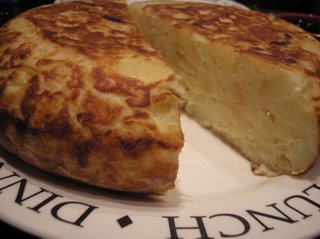Facts About Spanish omelette
The Spanish omelette, or "tortilla española" is a cherished classic in Spanish cuisine. This traditional dish is primarily composed of eggs, potatoes, and occasionally onions and is often enjoyed at room temperature as a tapa. In Spanish-speaking countries, it is also known as "tortilla de patatas" or "tortilla de papas."
The origins of the Spanish omelette date back to the early 19th century, with some of the earliest references found in documents from Navarre. There are several intriguing legends surrounding its creation. One story attributes its invention to Carlist General Tomás de Zumalacárregui during the siege of Bilbao. Another legend posits that it was devised by Spanish prisoners during the Portuguese Restoration War.
In Spain, "tortilla" translates to omelette, and when you specify "de patatas" or "de papas" it denotes a potato omelette. Internationally, it is frequently referred to as the "Spanish omelette" or "Spanish tortilla" but within Spain, the term "tortilla española" is commonly used.
Preparing a Spanish omelette is relatively simple. It begins with sautéing seasoned potatoes in olive oil, which are then combined with whisked eggs. This mixture is subsequently cooked to form a delectable omelette. It can be served hot, at room temperature, or even cold, and is often cut into small pieces for tapas.
One of the most remarkable culinary feats involving the Spanish omelette occurred in Vitoria, Spain, in 2014. A team of 12 chefs created an enormous tortilla using 1.6 tons of potatoes, 16,000 eggs, and other ingredients, resulting in an omelette with a 5-meter diameter!

 Morocco
Morocco